The following review was published by Fair Audio magazine, in an article by Martin Mertens. (translation from original in German).
After this review, Vicoustic Acoustic Elements won the Fairaudio's Favourite HiFi Award 2023. Read the news
Content Index:
- The room acoustics recipe
- Installation and sound test
- Test conclusion: room acoustics solutions
20 percent? 70 percent? Opinions differ on the contribution of room acoustics to the final sound result. However, there is a general consensus that this aspect should not be completely ignored. I wanted to know more about it for myself and optimized my listening room together with the specialists from Vicoustic from Portugal (German distribution: Audio Reference).
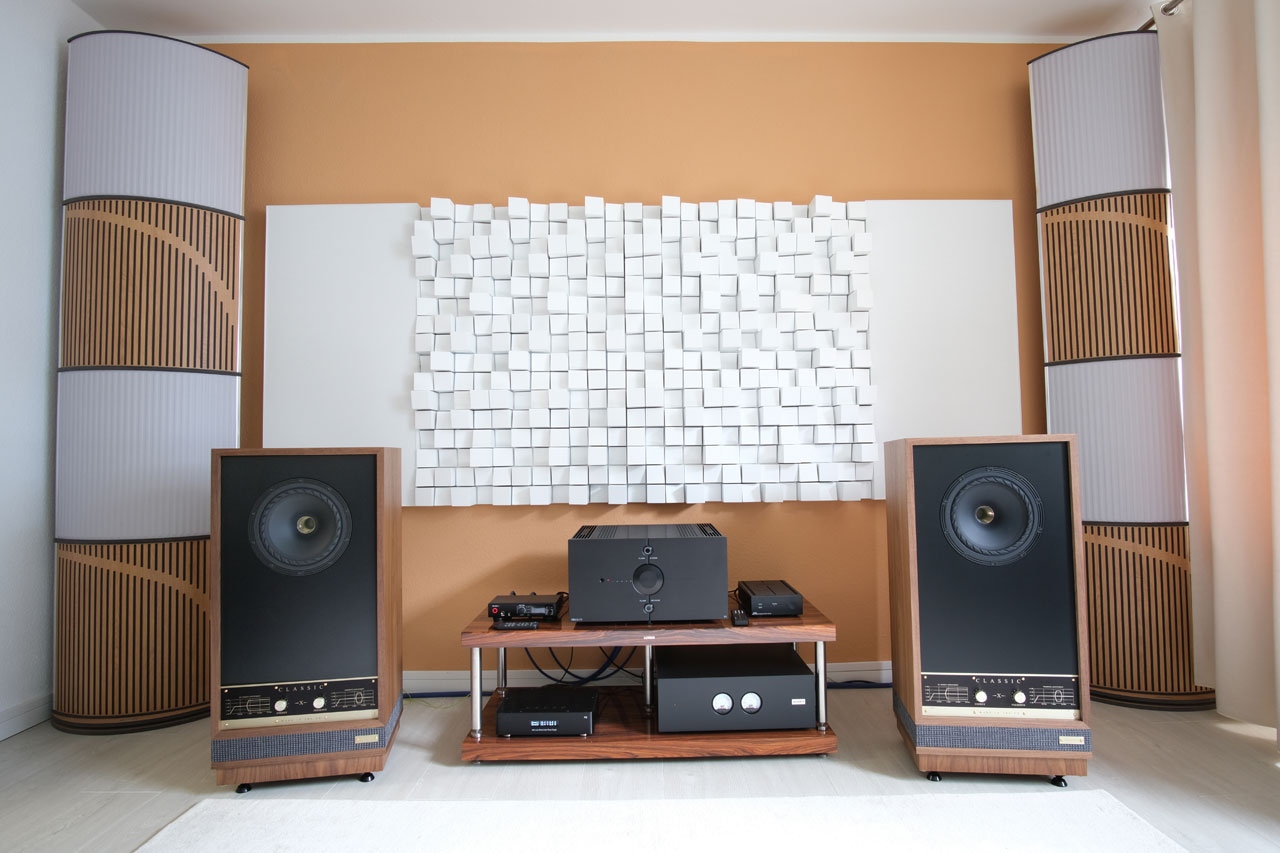
Many music lovers approach room acoustics measures only hesitantly or not at all. It is obvious why the subject is often neglected: Room acoustic measures usually have a significant impact on the living environment. Most of us are not fortunate enough to have our own listening room that can be designed and furnished according to acoustic requirements. Often the living room at home has to serve as a listening room, and here it is then necessary to reconcile various interests. In most cases, this means that the audiophile hobby has to be subordinate to pragmatic and aesthetic aspects.
Complexity and consequence - selection of suitable room acoustic solutions

Another problem with room acoustics is their complexity (read our basic article on room acoustics). A large number of room acoustic problems are faced with even more different solution approaches. It's easy to lose track here. Sure, you can experiment and try out what works in your own listening room. This is sometimes a tedious process, but it can also be fun.
I personally think that when it comes to room acoustics, there are different ways to get there. However, it is important to follow a concept consistently. Ideally, different room acoustic measures are coordinated so that they complement each other and achieve an optimal effect overall. For a long time I had been tinkering with the acoustics of my listening rooms - here I hung a diffuser on the wall, because there were Basotec blocks hidden in the corners. Once I even had an acoustic ceiling installed. Yes, that all helps a bit. However, the result can hardly be reliably calculated.

When it was time to renovate my listening room and study, I wanted to give room acoustics more space – and as I said, I have to realize that you can get lost here. It's not just the selection of absorbers, diffusers, bass traps, etc. that is huge – there are also various tools on the internet that promise to help optimize room acoustics. I can find even more opinions, tips and advice on what to do or not to do to tame the influence of the listening room on the sound in various forums. After a while I decide to seek professional help instead.
Vicoustic - room acoustic concepts and elements from Portugal
Audio Reference's inquiry as to whether anyone at fairaudio would be interested in having their listening room professionally acoustically optimized came at exactly the right time.
In addition to various hi-fi and high-end brands, the Hamburg distributor also offers products from the Portuguese manufacturer Vicoustic. The Portuguese are true professionals in the field of room acoustics. Absorbers, diffusers and bass traps for listening rooms and home cinemas are just a small part of their extensive portfolio. The company also offers room acoustics solutions for recording studios, cinemas, concert halls, public areas or offices and conference halls. The range of services includes the manufacture and sale of different acoustic elements or the preparation of special individual solutions, as well as services relating to the planning of corresponding acoustic measures.
Vicoustic has a special offer for "home users". You can have your acoustic project planned by the Portuguese specialists for a flat rate. The basic package includes reverberation time optimization, room mode considerations, perspective drawings of where which acoustic panels should be placed, and a list of required products. The premium package also offers photorealistic 3D renderings of the optimized listening room, giving you an idea of what the room will look like with the proposed acoustic elements.
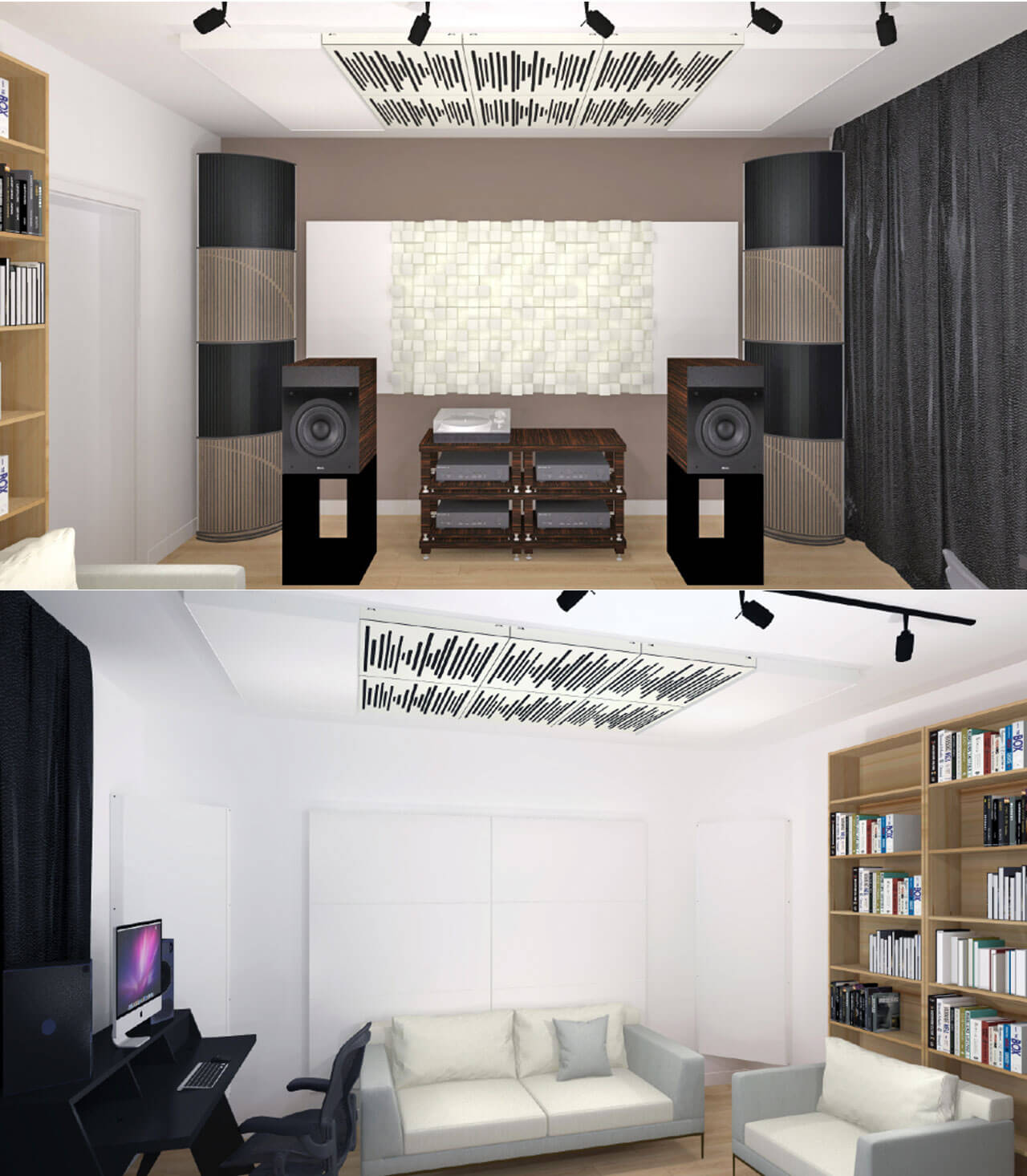
In addition, you can book the Vicoustic Premium package together with an acoustic room simulation, which provides information about how the acoustic optimization affects speech intelligibility, for example. The prices are between 130 euros for the basic project, range over 250 euros for the premium project and up to 1,000 euros for the premium project with acoustic simulation and for rooms with more than 100 square meters.
The initial room acoustic situation
In order for Vicoustic to be able to make appropriate suggestions for optimizing the acoustics, I first have to transmit the most important data for my room. A floor plan with the positions of doors, windows, heating and information on the height of the room, the condition of the building, walls and floors as well as photos of the listening room form the basis on which the computers in Portugal are started and a room acoustics concept is developed. In my case, the room is roughly square with an edge length of 4.20 meters and a height of 2.70 meters. The square floor plan sometimes causes a nasty resonance at around 40 Hertz. Another acoustic problem area is the large window, which occupies almost an entire wall area. I put a curtain that I can draw while listening intently, to soften reflections from the large glass surface. Walls and floors are solid construction, the floor is covered with design flooring, on which a carpet lies. The furniture is rather sparse. A bookshelf is acoustically effective.
After I send all the necessary information to Portugal, there are two more questions about the exact size and position of the window and heating.
The room acoustics recipe
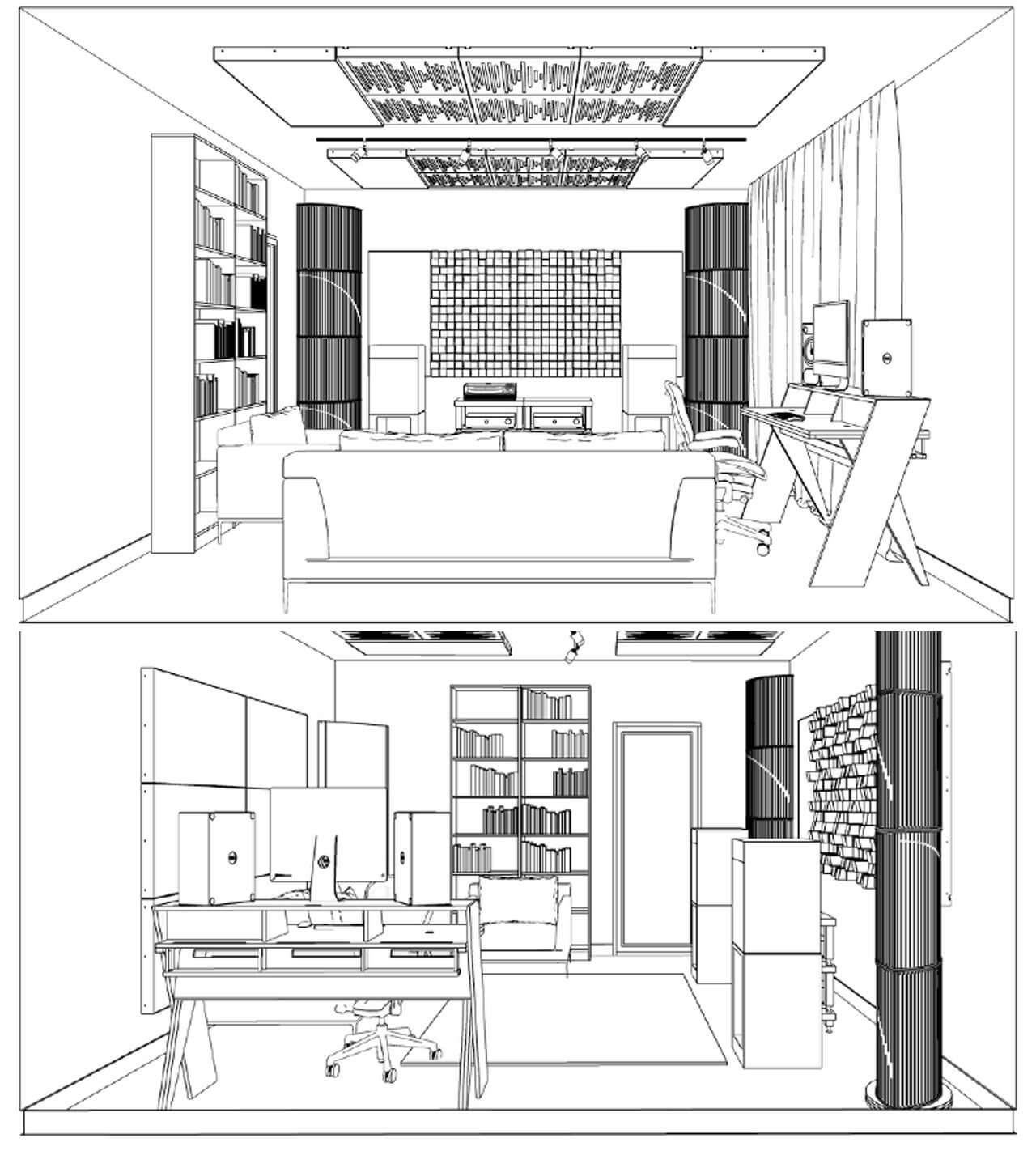
A few days later, a 16-page PDF document follows. After the title page, release notes and table of contents, there is a short text about the aim of the project, general measures and special problems, in my case the 40 Hertz drone frequency. This is followed by colored renderings that realistically show what my room will look like with the acoustic elements, perspective drawings, and diagrams and tables that show what the proposed measures will achieve. In my room, there should be bass absorbers in every corner, a large diffuser and two absorber elements on the wall between the loudspeakers, the opposite wall with absorber elements and the ceiling with combined absorber-diffuser elements. Furniture is also to be rearranged and the system and listening position are to be moved.
Finally, there is a list of all recommended acoustic elements and their description. Conveniently, Vicoustic offers sets that contain frequently used combinations of elements. I get the following list of materials for my listening room:
- 2 x Mega Bass Trap Kit
- 3 x VicAudiophile VMT Kit
- 2 x VicTotem Ultra VMT
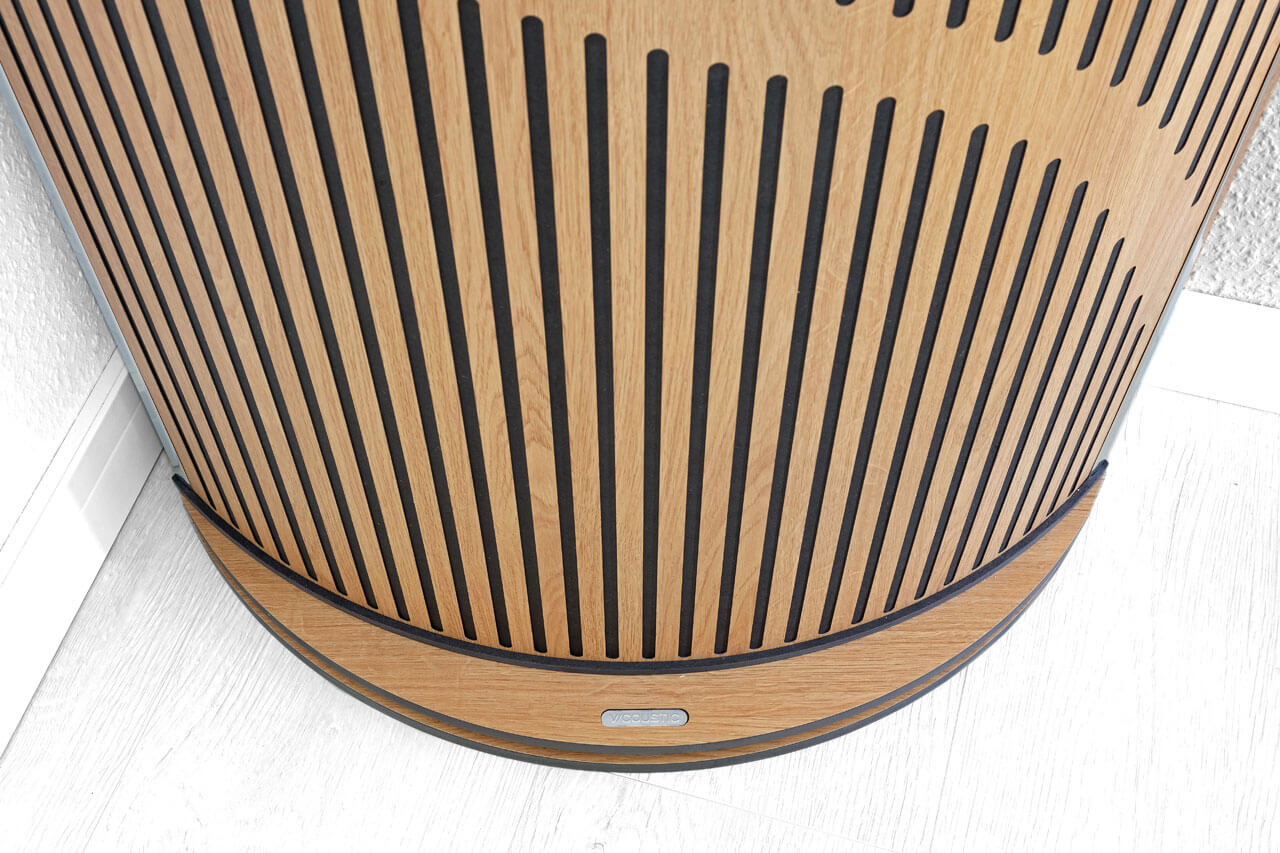
This sounds very clear at first. However, a VicAudiophile VMT Kit consists of four Flat Panel VMT with VicSpacer Plus, four VicPattern Ultra Wavewood and two Multifuser Wood MKII 64, making a total of ten acoustic elements. The three kits add up to a slim 30 elements. I can still choose the colors for the different elements and after a while I get the message from Audio Reference that the things have arrived from Portugal.
In the normal case of such an acoustic project, the support and physical implementation is carried out by the Audio Reference team or a suitably qualified dealer. Separate costs are incurred for the planning, but these are 100 percent credited back if the customer actually places the order.
I had agreed with Audio Reference that I would install the things myself because I wanted to repaint and change a few other small things in the room as part of optimizing the room acoustics. So I'll take things step by step. This also gives me time to hear how the individual measures are having an impact.
Vicoustic room acoustics system: construction and sound test
I start by assembling the large VicTotem Ultra VMT modules, which are simply placed behind the speakers in the corners of my listening room. The individual elements can act as absorbers or diffusers, depending on which side is facing forward.

Vicoustic's VicTotem Ultra VMT are free-standing acoustic elements that can perform different tasks: absorption, diffusion and bass management, as well as a combination of these properties. They consist of a base plate and pointed-oval elements, each 665 millimeters high, 675 millimeters wide and 395 millimeters deep. The elements have two different sides. If the fabric-like VMT side of the modules faces forward, the elements serve as sound absorbers. If the high-pressure laminate wood side faces forward, they act as a diffuser. Set up in the corners of the room, they serve as bass traps. With the help of additional modules, the VicTotem Ultra VMT can be adapted to the room height.
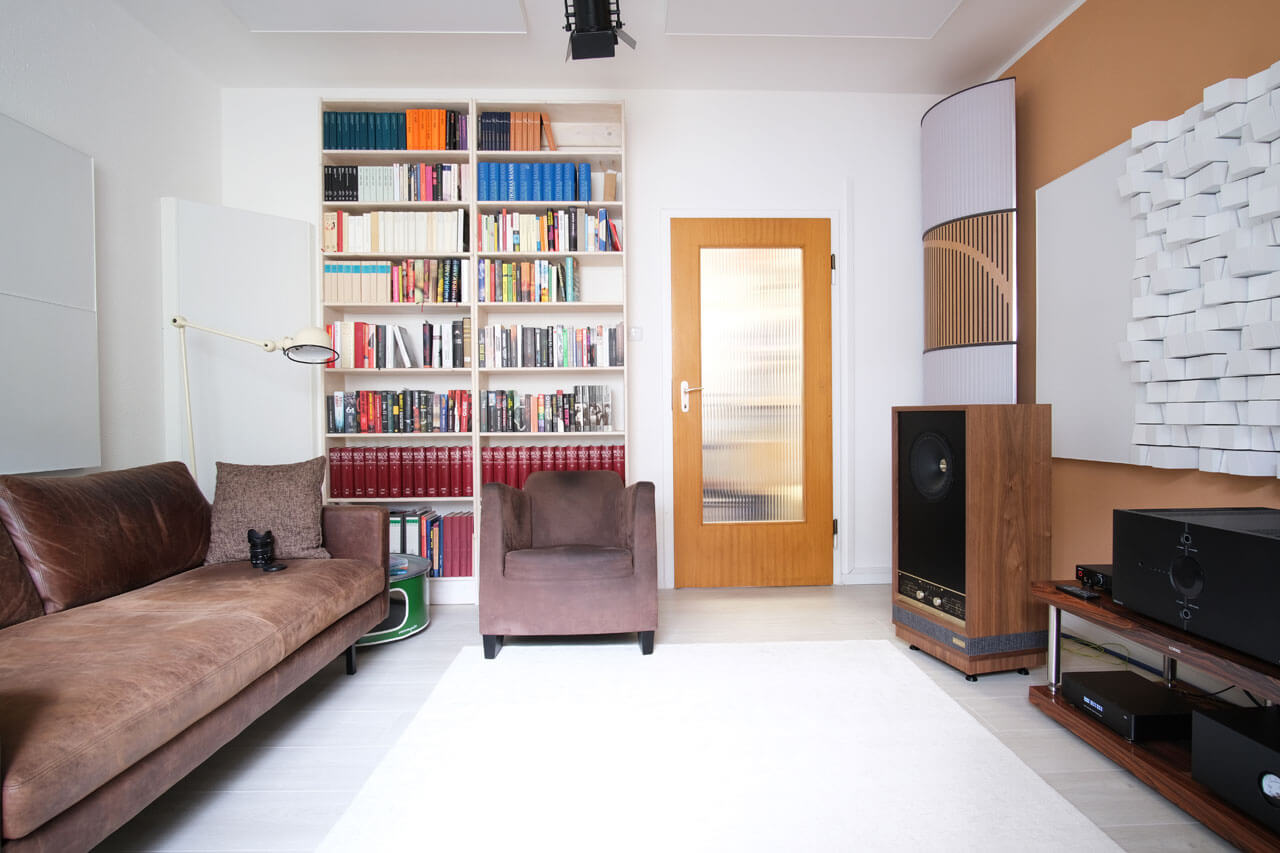
I use four VicTotem Ultra VMT elements on each side, which are placed alternately with the diffuser and absorber side to the front. In my room, the Ultra VMT are almost as high as the ceiling and look powerful. My expectations of what the big parts bring are correspondingly high. However, my expectations are disappointed. The bass becomes a nuance clearer and tends to be a little less boomy, yes. But otherwise I had expected that the huge parts would control the bass even more.
Next, I install the "Mega Bass Trap VMT" in the opposite corners of the room. The construction of these broadband bass traps from Vicoustic is undoubtedly well thought out. I have to note, however, that the layout of my room isn't an exact rectangle, but rather a slight parallelogram, so that one corner of the room is less than 90 degrees and the other corner is greater than 90 degrees. In addition, the plasterers did not apply the plaster in an even layer thickness. The walls have a slight, concave curvature. The installation of the individual acoustic elements is therefore a bit long for me. Of course, if you have the Audio Reference team or your dealer do the installation, it will be done by professionals who are familiar with such problems.
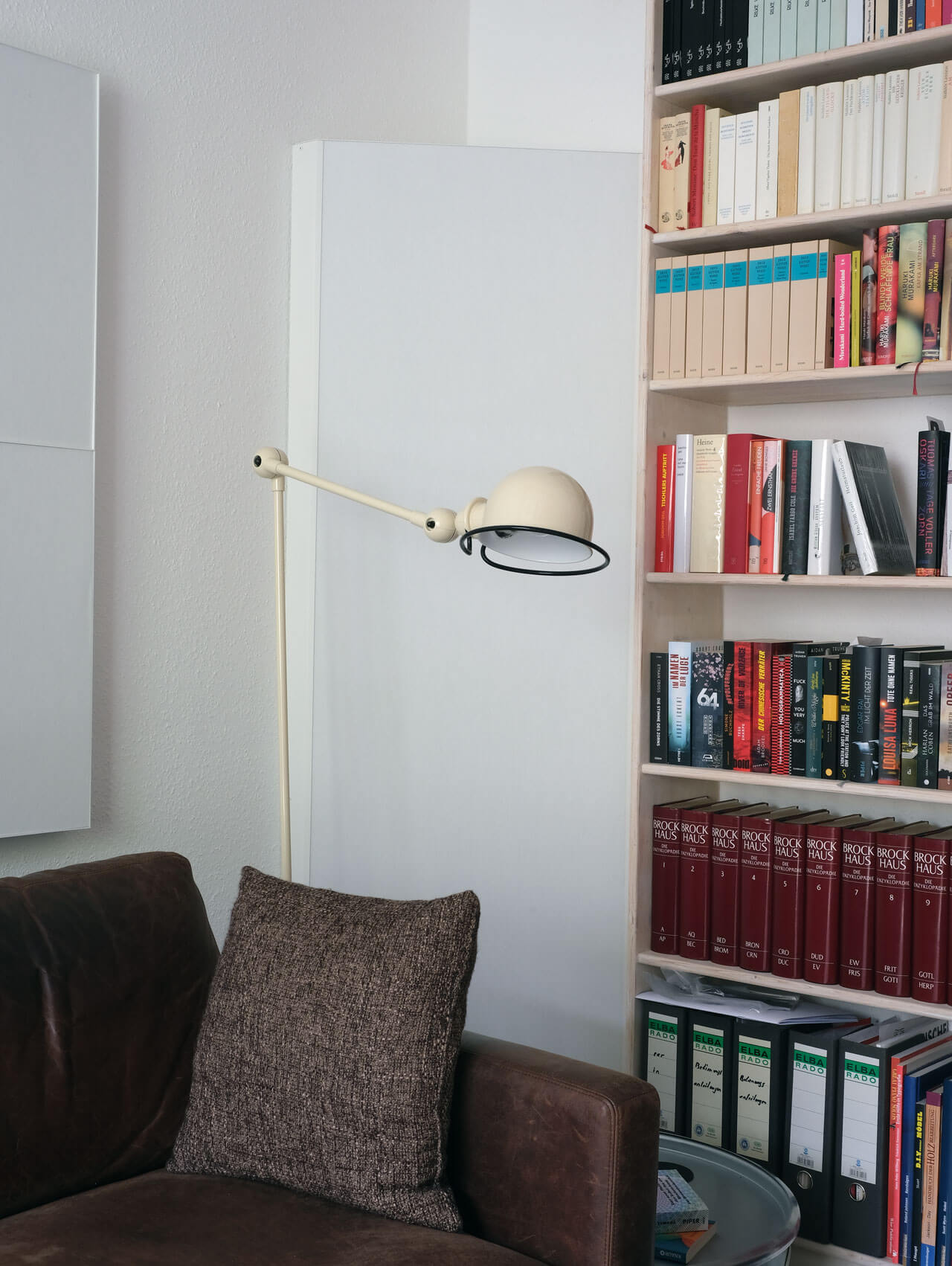
Vicoustic's Mega Bass Trap VMT are bass absorbers with a triangular floor plan that are attached to the walls in the corners of the room. They consist of painted steel profiles, MDF and PET wool and are 1788 millimeters high, 680 millimeters wide and 384 millimeters deep.
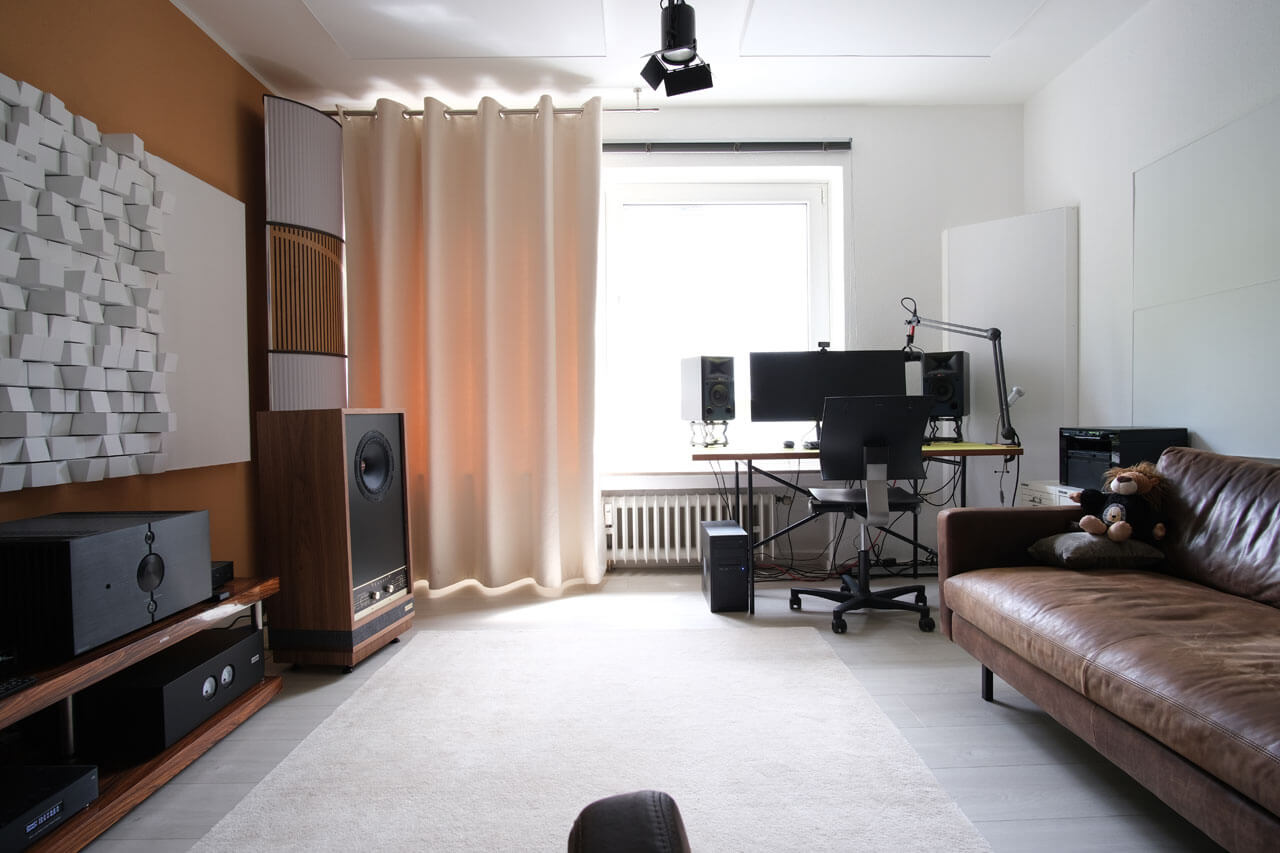
However, the success of the effort is resounding: I was disappointed by the sole effect of the Vicoustic Ultra VMT, but synergy effects seem to appear in connection with the Mega Bass Trap VMT. The bass reproduction makes a huge leap forward in terms of quality. Before installing Ultra VMT and Mega Bass Trap VMT I had said pretty nasty booming frequency around 40 Hertz. It may not have completely disappeared, but it is only noticeable very subtly, so that I can now enjoy many pieces that I had hardly ever heard before, and certainly not at all loudly. In addition, the precision in the entire bass range clearly gains. Percussion sounds incredibly "tacky" and I experience La Bamba by the O-Zone Percussion Groupin a completely new quality. The whole thing is now less powerful, but comes across a whole lot more dynamic and accentuated.

The Vicoustic Multifuser Wood MKII 64 consist of solid wood and a total of four elements, each of which can be hung in a different orientation. A four-element diffuser measures 595 x 595 x 143 millimeters (HxWxD)
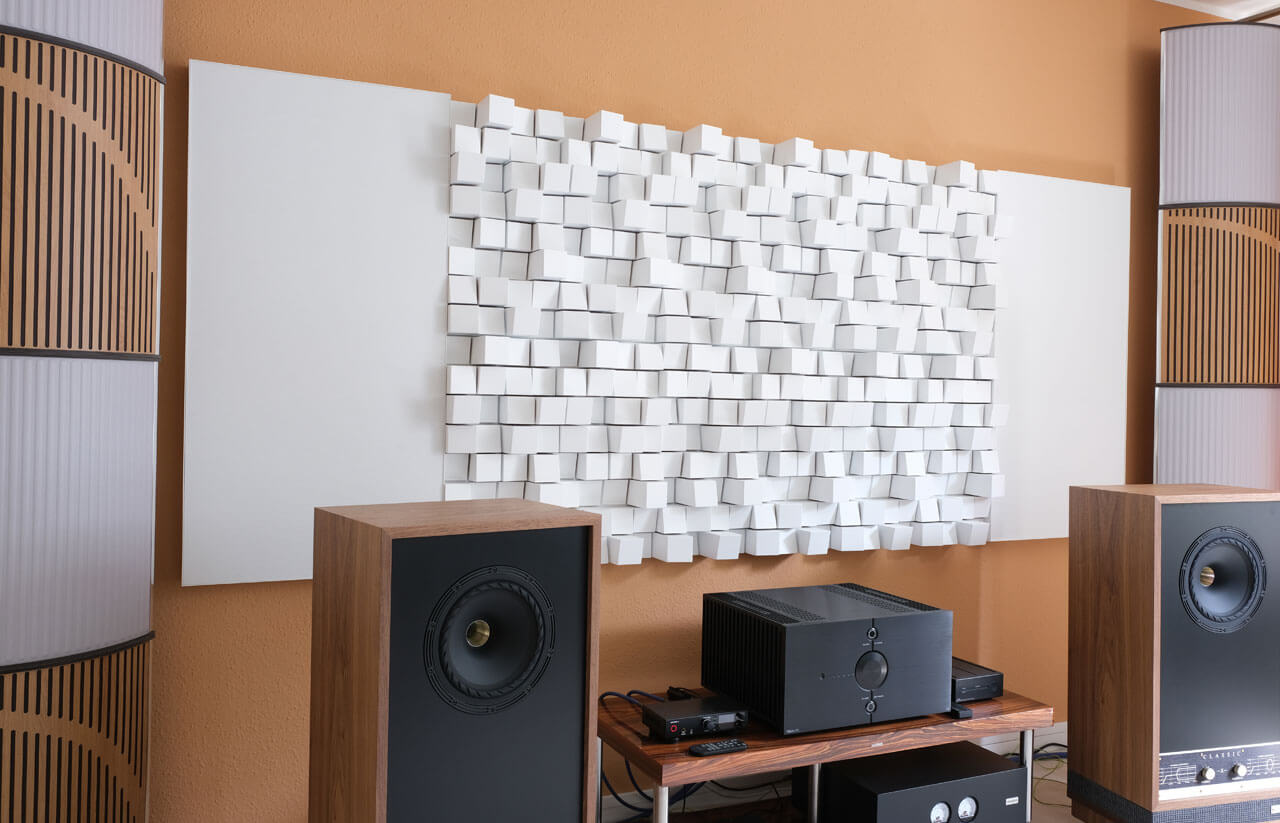
Next is the large diffuser, which should be attached to the wall in the middle behind the speakers. Since I'm a bit concerned whether the 1950s wall of crumbs will support the eight comparatively heavy "Multifuser Wood MKII 64" that make up the diffuser surface, I build myself a wooden frame on which to hang the modules. Of course, Vicoustic also offers ready-made solutions made of aluminum profiles for such problems, which would certainly have been used if I had had the entire project implemented via Audio Reference, as is the case with a "normal" customer. Two "Flat Panel VMT with VicSpacer Plus" surface absorbers are attached to the right and left of the diffuser. These are frames made of wood and metal,
Here I experience almost the same as after setting up the Ultra VMT. The large Vicoustic diffuser looks impressive and I expect a drastic improvement in spatial imaging, but the actual effect is much less impressive.

But in the meantime I have learned that what Vicoustic recommends as measures is systematic. So I attach the recommended "Flat Panel VMT with VicSpacer Plus" to the wall opposite, i.e. behind my seat, which together result in an absorber area of around 2400 x 1200 millimeters. Here, too, the concave walls bother me, and here too the effect is impressive after the work is done:
After I didn't place my sofa in the middle of the room as recommended, but at a greater distance from the back wall (30 centimetres), I experience a much better representation of the room than I would have expected - this measure exceeds my expectations ! And considering the effort involved, they were by no means low.
Yes, my system was already quite good at spatiality. But this aspect of music reproduction has never been so natural and confident in my listening room as after the installation of the large diffuser and absorber surfaces. My impression that someone here knows pretty well how to get the room acoustics under control is confirmed. Singers are much clearer, more focused in the center of the stage, localization is sharper and the width and depth of the stage appear more clearly illuminated. However, the events no longer seem so cloudy and expansive. Now I tend to sit in front of rather than in the action, which I perceive much more precisely in its spatial details. I experience this impressively with the album Stay Tuned! fromDominique Fils-Aimé, in which the singer seems to materialize extremely vividly and realistically in my listening room.
Finally, I still face the challenge of attaching twelve "VicPattern Ultra Wavewood" and four "Flat Panel VMT with VicSpacer Plus" to the ceiling. The ceiling is made of sturdy reinforced concrete and I have the right tool: an amazingly handy, pneumatic cordless hammer drill (which the AR team usually has with them, of course). Sorry dear neighbors, you have to go through that…
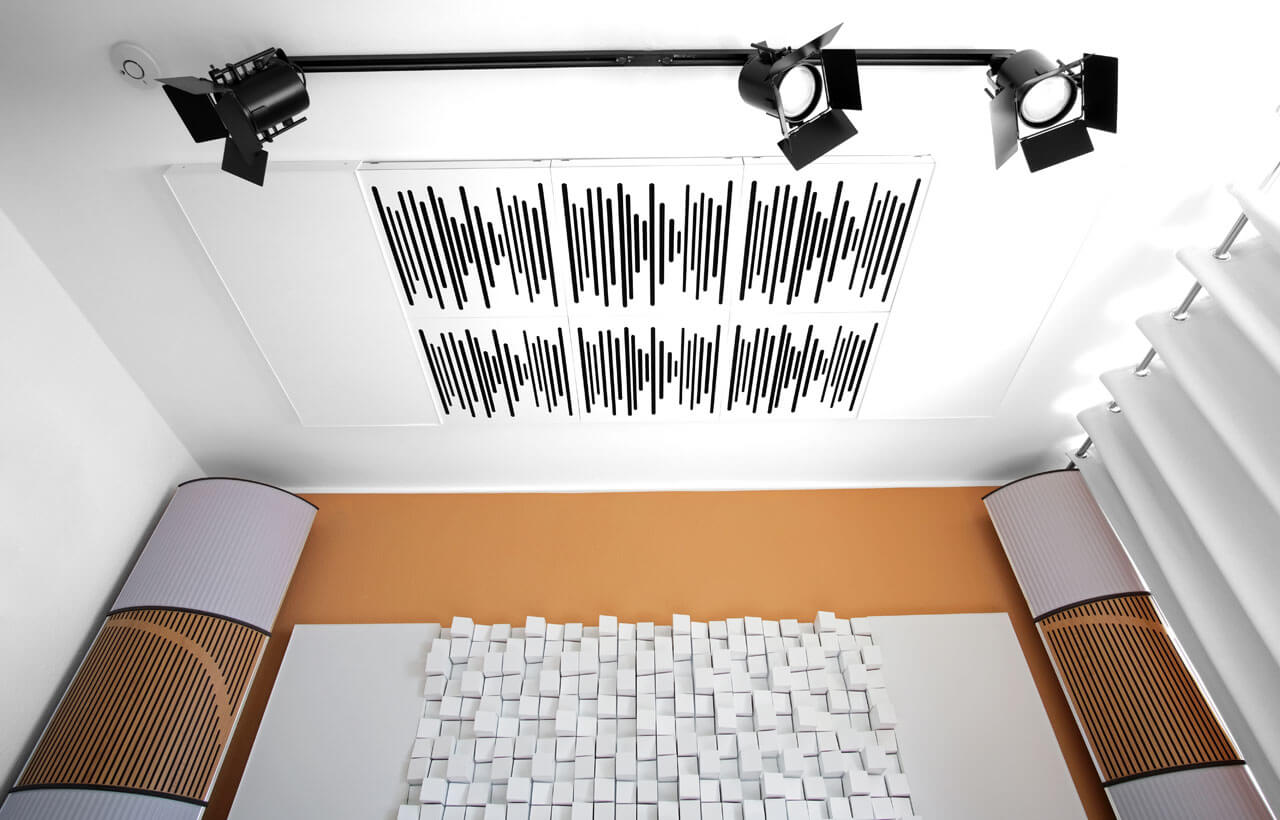
The ceiling-side Vicoustic VicPattern Ultra Wavewood is designed to control the sound energy in a room while still providing a vibrant sound. They are made of high-pressure laminate (HPL) and MDF and are available in eight different wood and metallic colours. The VicPattern Ultra Wavewood is filled with PET wool specially developed by Vicoustic, which maximizes the panel's acoustic absorption capacity. A VicPattern Ultra Wavewood measures 595 x 595 millimeters and is 50 millimeters thick
These elements bring even more calm into the room. In the case of excellent, very low-interference hi-fi components, this is often referred to in the test report as "acoustic blackness". My listening room now seems quieter, probably due to the overall reduced reflections and shorter reverberation times. This applies to background noise, such as street noise. But that also applies to music, which is now able to sound even clearer and more concentrated. Details and subtleties come to light more clearly, every tone sounds more precise, more concrete. Looking at the ceiling construction, I have to admit that I didn't expect such a clear effect.
Test conclusion: room acoustics solutions from Vicoustic
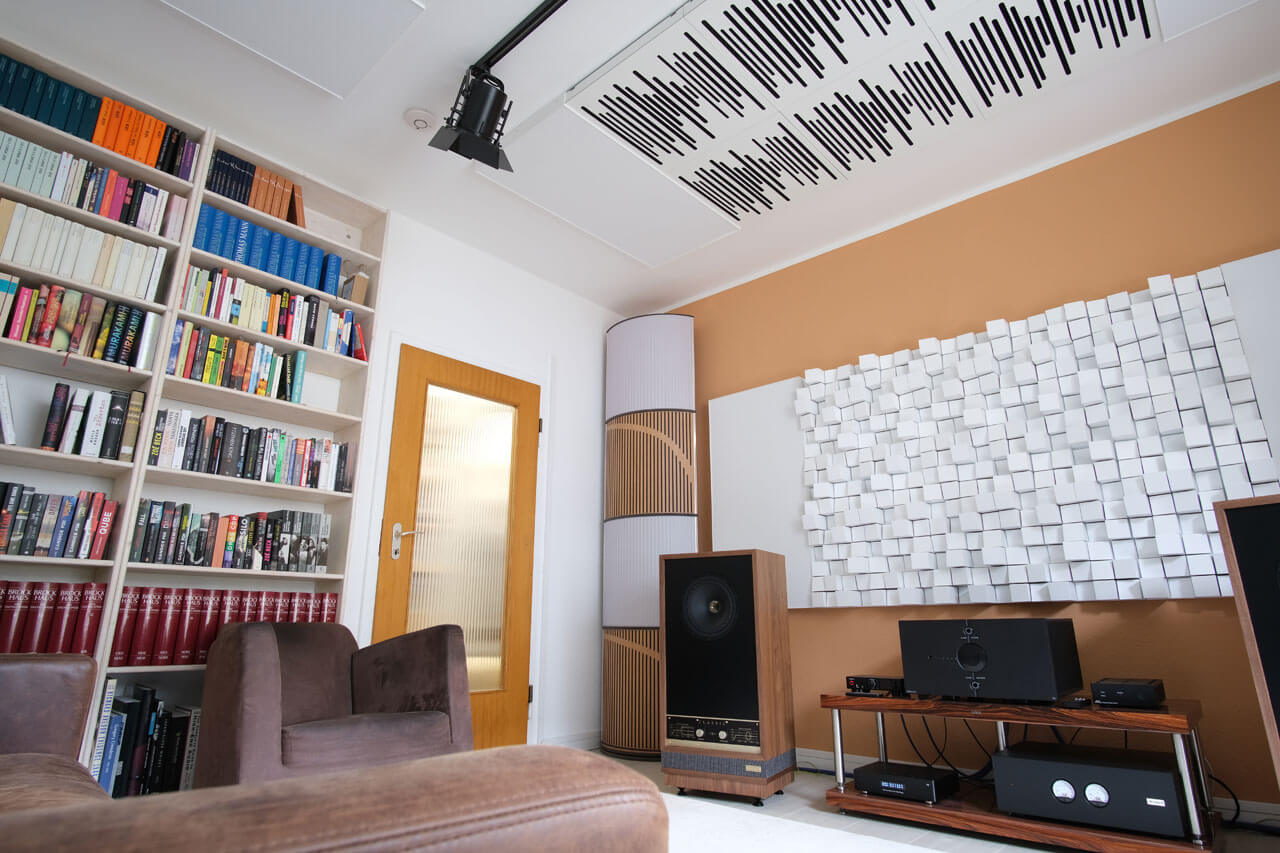
As you can see from the renderings and even more from the photos of my listening room, the room acoustics cannot be hidden. A good deal of material has gotten onto the walls and ceilings, not to mention the bass absorbers in the corners. I get a lot of positive feedback from my partner and friends about the new look of my listening room. Some even consider the diffuser between the boxes to be art. Expert friends, on the other hand, are more impressed by the new acoustics of my listening room. Music reproduction has clearly improved in all aspects: starting with the clear, precise bass reproduction, through the extremely three-dimensionality to the clearly increased perceptibility of details. With the help of the Vicoustic room tuning measures, the playback quality in my listening room has definitely increased more than if I had put the same money into even higher-quality components. I'm sure that every component upgrade will be even more noticeable in the future.
Is the rather complex room tuning measure worth it? Definitive. Do you find your roommates understanding? A joint listening session after the acoustic elements have been installed will certainly sound forgiving tones.
This review was conducted by Martin Mertens and published by Fair Audio Magazine in May 2023. You can see the original review, in German, at Fair Audio magazine. All opinions and comments from the interviewer are the responsibility of the authors.
Special thanks to Audio Reference, distributor of Vicoustic in Germany.
Project Ref: pp.3173.22.int
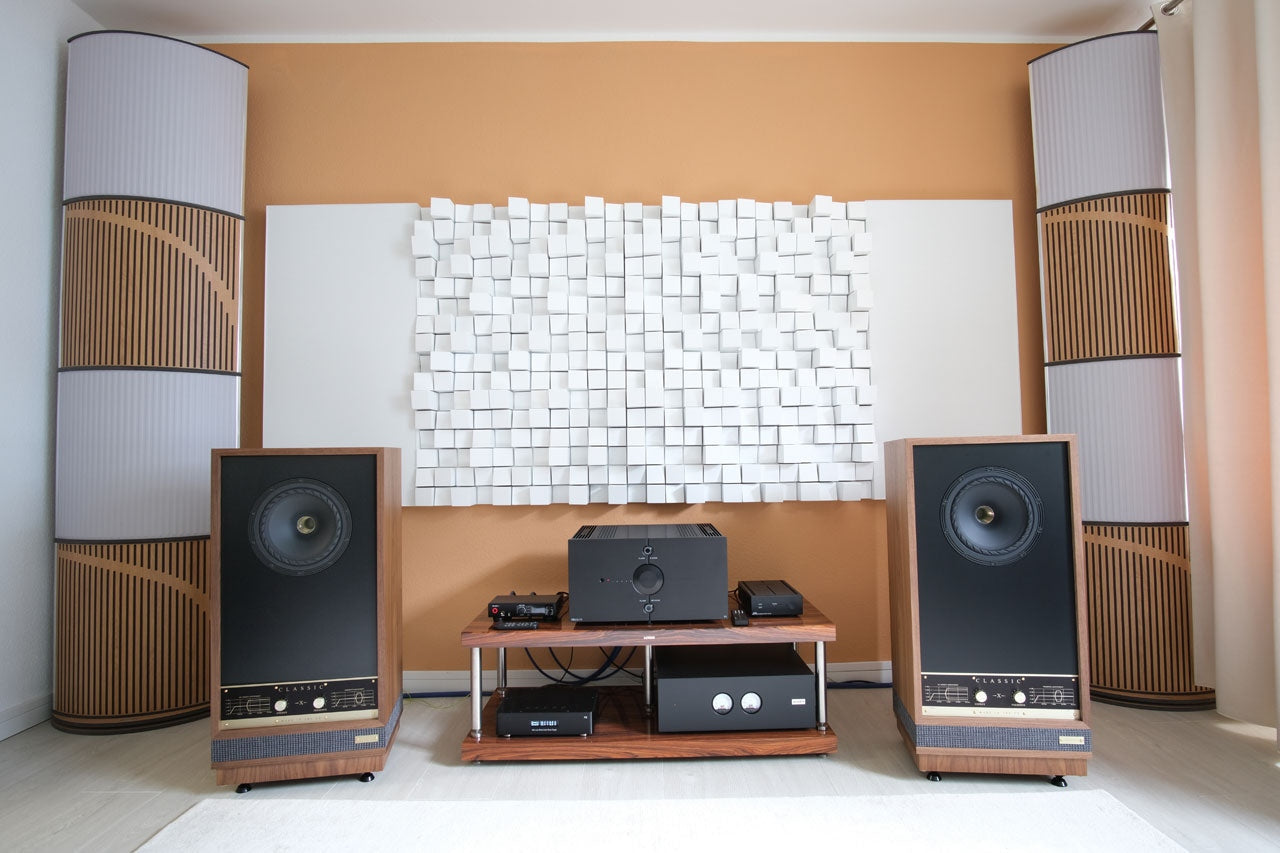
Share:
How to reduce echo in a home?
VicStrip Spacer Kit premieres at High End 2023